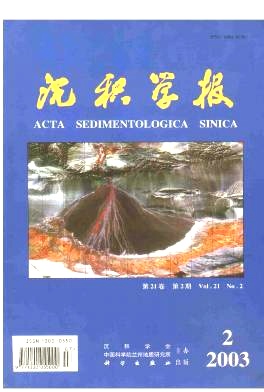|
[1]
|
刘东生.黄土与环境[M].北京:科学出版社,1985.4~6,170~172,277~300[Liu D S.Loess and environment[M].Beijing:Science Press,1985.4~6,170~172,277~300] |
|
[2]
|
王永焱,林在贯.中国黄土的结构特征及物理力学性质[M].北京:科学出版社,1991.158~171[Wang Y Y,Lin ZG.Structure characterisfc of loess in China and physical, mcchanical character[M]. Beijing:Science Press, 1991.158~ 171 ] |
|
[3]
|
朱显漠,祝一志.论中国黄土高原土壤与环境[J].土壤学报,1992,29(4):351~357[Zhu X M,ZhuYZ.Adiscussion on spils andenvironment in the Loess Plateau of China[J]. Acta Pedologica Sinica, 1992,29(4):351~357] |
|
[4]
|
雷祥义.秦岭黄土的粒度分析及其成因初步探讨[J].地质学报,1998,72(2): 178~187 [Lei X Y. Priminary study on particle size composition and its origin[J]. Acta Geologica Sinica, 1998,72(2): 178~187] |
|
[5]
|
Kukla G J. Loess stratigraphy in central China[J]. Quaternary Science Review, 1987, 6:191~219 |
|
[6]
|
RutterN W.中国第四纪黄土和全球变化[J].第四纪研究,1992,12(1): 1 ~ 11 [ Rutter N W. Quaternary loess in China and global change [J]. Quaternary Sciences, 1992, 12(1): 1 ~ 11 ] |
|
[7]
|
Emiliani C. Paleotemperature analysis of Core 280 and Pleistocene correlation[J]. Journal of Geology, 1958, 66:264~272 |
|
[8]
|
Kukla G J. Pleistocene land and sea correlation[J]. Earth Science Review, 1977, 13:307~374 |
|
[9]
|
赵景波.第四纪冷干气候条件下发育的古土壤[J].土壤通报,1991,22(6):245~248[Zhao J B.Paleosol developed under cold and arid Quaternary climate[J].Soil Bulletin,1991,22(6):245~248] |
|
[10]
|
赵景波.西安刘家坡剖面第1第5层古土壤研究[J].地理研究,1991, 10(4): 51 ~ 58[Zhao J B. A study on lst and 5th paleosol in Li-ujiapo profile in Xi'an[J].Geographical Research,1991, 10(4):51~58] |
|
[11]
|
赵景波,黄春长,岳应利.中国黄土中的风化壳研究[J].沉积学报,2001,19(1):90~95[Zhao JB,HuangCC,YueYL.A study on wea-thering crusts in loess ofChina[J].ActaSedimentlogica Sinica,2001,19(1):90~95] |
|
[12]
|
唐克丽.武功黄土沉积中埋藏古土壤微形态及其发生学探讨[J].科学通报,1981,26(3):177~179[Tang K L.A discussion on micromorpholog of buried paleosols in loess of Wugong and its origin[J].Chinese Science Bulletin, 1981, 26(3): 177~179] |
|
[13]
|
熊毅,李庆逵.中国土壤[M].北京:科学出版社,1989.150~162[XongY,Li QK.Soil in China[M].Beijring:SciencePress,1989.150~162] |
|
[14]
|
赵景波.西北黄土区第四纪土壤与环境[M].西安:陕西科学技术出版社,1994.70~82[Zhao J B.Quatemary soils and environment in northwestern loess area[M]. Xi'an: Scientific and Technological Press of Shaanxi, 1994.70~82] |
|
[15]
|
Marion G M, Schlsinger W H. and Fonteryn P J. A regional model for soil CaCO3 deposition in Southwestern Desert [J]. Soil Science,1985, 139:468~481 |
|
[16]
|
赵景波.关中平原黄土中古土壤CaCO3淀积深度研究[J].科学通报,1991,36(18):1 397~1 400[Zhao J B.A study on illuvial depth of CaCO3 of paleosol in loess in the Guanzhong Plain[J]. Chinese Science Bulletin, 1991, 36(18):1 397~1 400] |
|
[17]
|
赵景波.黄土中古土壤淀积类型[J].地理学报,1995,50(1):45~50[Zhao J B.Illuvial typesof CaCO3 in paleosols in loess[J].Acta Geographica Sinica,1995,50(1):45~50] |
|
[18]
|
赵景波.风化淋滤带地质新理论-CaCO3淀积深度理论[J].沉积学报,2000,18(1):29~35[Zhao J B.Anev geological theory on weathering and leaching zone--illuvial theory of CaCO3 [J]. ActaSedimentologica Sinica, 2000, 18(1): 29~35] |
|
[19]
|
朱志诚.秦岭及其以北黄土区植被地带特征[J].地理科学,1991,11(2): 151 ~ 164[Zhu Z C. Regional characteristic of vegetation in the Qinling Mountains and beyond its north[J]. Scientia Geographica Sinica,1991,11(2):151~164] |
|
[20]
|
丁仲礼,刘东生,刘秀铭等.250万年来的37个旋回[J].科学通报,1989,34(19):1 494~1 496[DingZL,LiuDS,LiuXM et al.37 cycles since 2.5Ma B.P[J].Chinese Science Bulletin,1989,34(19):1 494~1 496] |
|
[21]
|
赵景波,岳应利,陈云.黄土湿陷性及其成因[J].地质力学学报,1997,4(3):62~68[Zhao J B,Yue Y L,Chen Yun.Collapsibility of loess and its origin[J].Joumal of Geomechanics,1997,4(3):62~68] |






 DownLoad:
DownLoad: